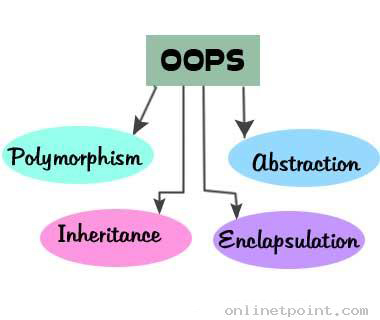Java Introduction
Java language tutorial helps you to understand the Java language for beginners, as well as professionals.
Java language tutorial explained with simple programs.
Each topic explained with a simple diagram for better understanding.

What is Java?
Java is a programming language that provides software for multiple platforms. When the programmer writes a java application, the compiled code runs on operating systems, including Windows, Linux, and Mac OS.
Java derives syntax from C and C++ programming languages. It is a high-level language, robust, secured and an object-oriented programming language. Java has its own runtime environment and API, which called a platform.

Object Oriented Programming(OOPs)

Java language is the object-oriented programming language. OOPs is the programming style and it is associated with the many concepts. The concepts are listed below.
- Inheritance
- Polymorphism
- Abstraction
- Encapsulation
Simple Java Program
public class Simplejava
{
public static void main(String []args)
{
System.out.println("Hello World"); // prints Hello World
}
}
What is the use of Java ?
It can be used to create complete applications that may run on a single computer or be distributed among servers and clients in a network.
It can also be used to build a small application module for part of a webpage usage.
Types of Java applications:
Desktop GUI applications
Java provides GUI development by using abstract Windowing Toolkit (AWT), Swing and JavaFX. AWT contains pre-constructed components such as menu, button, list, and third-party components. These are used to standalone applications.
Mobile applications
Java ME is a cross-platform framework to build applications that run on all java supported devices including mobile phones.
Embedded systems
These are used in specialized computers by tiny chips. The components of larger electromechanical systems performing dedicated tasks.
Web applications
Java provides Servlets, struts or JSP technologies for web application support. An application that runs on the server side and generates a dynamic page is called web application.
Enterprise applications
Java enterprise edition provides an API and runtime environment for scripting and running enterprise software that including network applications and web services.
Scientific applications
In scientific calculations and mathematical operations, we use java for writing applications. By using this it is to be fast and secure, have a high-level degree of portability and low maintenance.
Difference between C++ and Java.
| C++ | Java |
|---|---|
| It was developed by Bjarne Stroustrup in 1979. | It was developed by James Gosling and his team in 1991. |
| It is platform dependent. A particular platform for compilation is needed. | It is platform independent. Program in java will run without recompilation by using Java Virtual Machine. |
| It is mainly used for system programming. | It is mainly used for application programmings like window, web-based, mobile and enterprise applications. |
| It supports operator overloading and function overloading. | It does not support operator overloading, function overloading is possible. |
| It fully supports pointers. | Pointers are supported internally but writing a program is not possible. Restricted support for pointers in Java. |
| It supports structures. | It does not support structures. |
| It supports unions. | It does not support unions. |
| It does not have built-in support for threads. | It fully supports threads. |
| It supports object management by using new and delete keywords. | It relies on automatic garbage collection. It does not support destructors like C++. |
| It supports the goto statement. | It does not support the goto statement. |
| It supports multiple inheritances. | It does not support multiple inheritances but similar results can achieve by using interfaces. |
| It does not support documentation comments within source code. | We can write comments using /**…..*/. |
| It does not support unsigned right shift operator (>>>). | It supports the unsigned right shift >>> operator. |
| It provides call by reference and call by value. | It supports only call by value. |
| It provides a virtual keyword to support function overloading. | It can be overridden by default virtual in nature. Thus it does not support virtual keyword. |
| It uses compiler only. | It uses both compiler and interpreter. |
Quickly Find What You Are Looking For
Onlinetpoint is optimized for basic learning, practice and more. Examples are well checked and working examples available on this website but we can't give assurity for 100% correctness of all the content. This site under copyright content belongs to Onlinetpoint. You agree to have read and accepted our terms of use, cookie and privacy policy.
 point.com
point.com